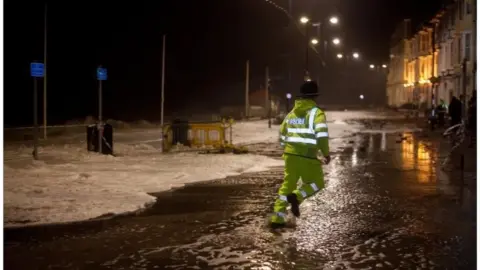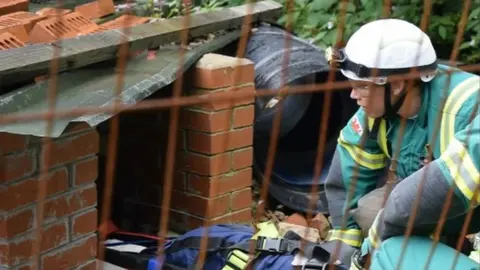Terrorism on special Welsh ambulance unit's radar
A specialist ambulance team set up to respond to major casualty incidents has said it is well prepared to handle a terrorism attack in Wales if it occurs.
The Welsh Ambulance Service's Hazardous Area Response Team (Hart) can also deal with flooding or chemical incidents.
Set up in Bridgend five years ago, it can be scrambled to any part of Wales.
The team said it is constantly adapting its training, including to respond to terrorism events, which could involve mass casualties.
Training also covers potential biological and radioactive incidents.
It has also been taking into account the lessons learnt after major events like the recent attacks on London and Manchester along with the Grenfell Tower fire.
Gavin Quinn, clinical team leader, said: "From a medical perspective, it's reassuring for the public to know there's a dedicated team of healthcare professionals trained and equipped to respond to these incidents."
 Michael Bull
Michael BullThe 42-strong unit - which works in teams of six - responded to serious flooding in Aberystwyth, Ceredigion, and Rhyl in Denbighshire.
It was also involved in planning for major events like the 2014 Nato summit in Newport and the 2017 Champions League final in Cardiff.
Teams can be mobilised within minutes and leaders are constantly monitoring emergency calls for incidents at which their skills can be deployed.
Mr Quinn said: "We've had some major road accidents on the motorways, we've had chemical incidents in leisure centres, where members of the public have been overcome by fumes - a large variety of incidents."

Team leader Sarah Price, who has been with Hart since it began, said the job had changed.
The recent terrorism attacks in London and Manchester had made a difference too.
"We definitely find ourselves training more for these kind of events now," she said.
"We keep up-to-date with current affairs and keep our training up-to-date with that. We have more equipment and we can deal with whatever comes to us."
Paramedic Keith Ellingham said: "The biggest draw was the physicality of the job for me - we can go to a variety of different situations whether in water, collapsed buildings, confined spaces or at height."
As for the threat of terrorism, he added: "The Hart service as a whole is geared up, there is a high threat level. Within Wales we're prepared for the eventualities if it does happen that we can respond."
Chris Sims, the ambulance trust's head of operations, said Hart had faced some challenging incidents in its first five years.
"The training that our teams go through can sometimes be arduous and difficult but their commitment is exceptional," he said.
